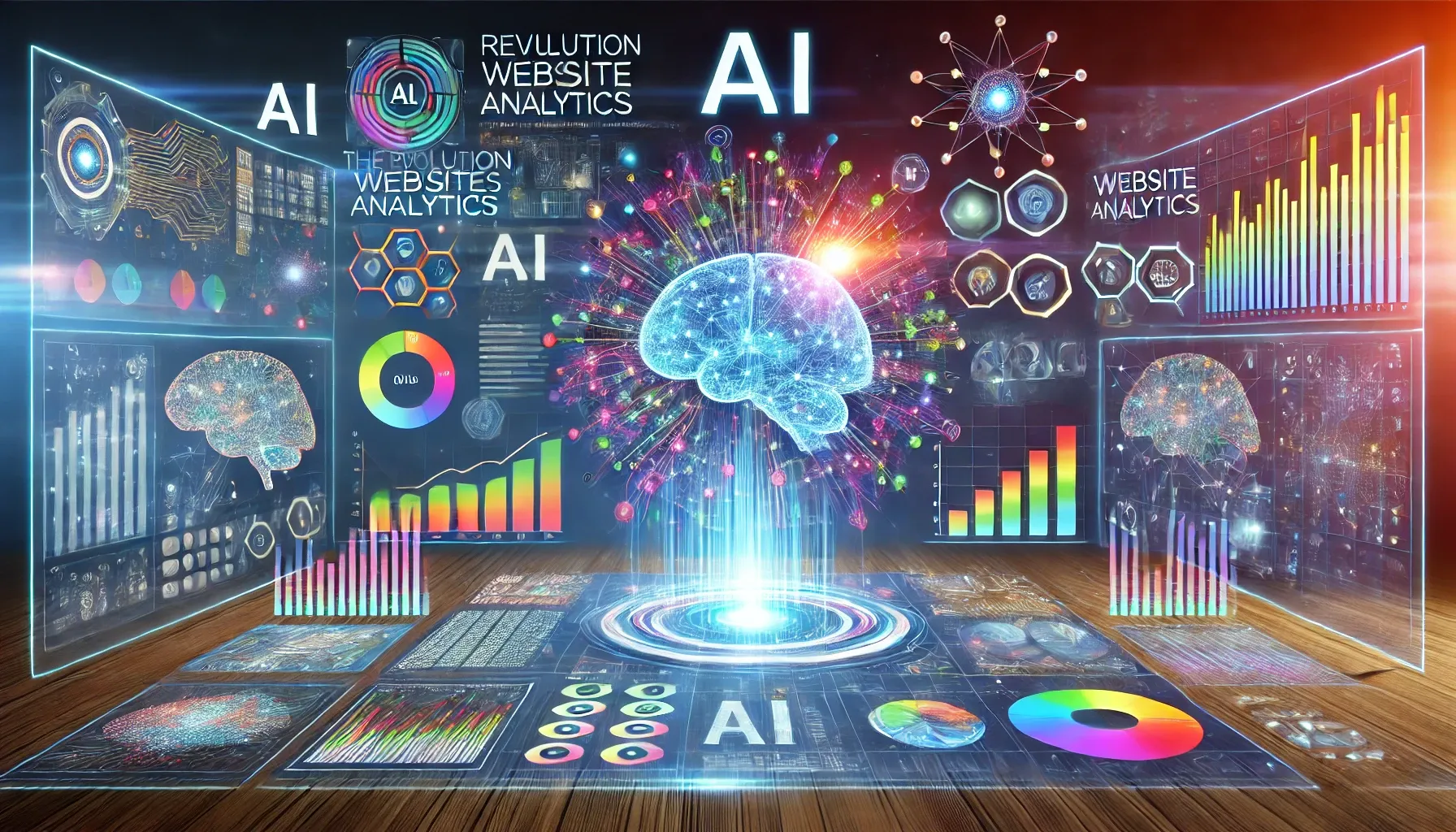5 Ways AI is Revolutionizing Website Analytics

In the ever-evolving digital landscape, staying ahead of the curve is crucial for businesses looking to maximize their online presence. Enter Artificial Intelligence (AI) – a game-changer that's reshaping the way we approach website analytics. According to a recent study by Gartner, by 2025, over 75% of enterprises will shift from piloting to operationalizing AI, driving a 5X increase in streaming data and analytics infrastructures. Let's dive into five groundbreaking ways AI is transforming this field.
1. Real-Time Optimization
Gone are the days of static websites and delayed analytics reports. AI-powered systems now offer real-time optimization, continuously analyzing user behavior and making instant adjustments to improve user experience.
- Dynamic Content Adjustment: AI algorithms can modify website content, layout, and design elements on the fly based on user interactions. For instance, an e-commerce site might automatically adjust its homepage layout based on real-time user engagement data, showcasing popular products or timely promotions.
- Immediate Response to Trends: Sudden shifts in user behavior or traffic patterns can be identified and addressed instantly. During a viral social media event, an AI system could quickly detect the surge in traffic and automatically optimize server resources to handle the increased load.
Case Study: Netflix uses AI-driven real-time optimization to personalize its homepage for each user, resulting in a 10% increase in user engagement and a significant reduction in subscriber churn.
2. Predictive Analytics
AI's ability to process vast amounts of data and identify patterns enables predictive analytics, giving businesses a glimpse into the future of their website performance.
- User Behavior Forecasting: Predict how different user segments are likely to interact with your site. This could involve anticipating peak traffic times, popular content, or potential conversion paths.
- Trend Anticipation: Stay ahead of emerging trends in user preferences and market demands. AI can analyze historical data alongside current market indicators to predict upcoming trends, allowing businesses to proactively adjust their strategies.
Industry Insight: According to MarketsandMarkets, the global predictive analytics market size is expected to grow from $10.5 billion in 2021 to $28.1 billion by 2026, driven largely by the adoption of AI and machine learning technologies.
3. Enhanced Personalization
One-size-fits-all is a thing of the past. AI takes website personalization to new heights, creating unique experiences for each visitor.
- Individual User Profiles: AI can create and continuously update detailed profiles for each user, considering factors such as browsing history, purchase behavior, demographic information, and even contextual data like time of day or weather conditions.
- Tailored Content and Recommendations: Deliver personalized content, product recommendations, and offers based on individual user behavior and preferences. For example, a news website might use AI to curate a personalized feed for each reader based on their reading history and engagement patterns.
Stat: Accenture reports that 91% of consumers are more likely to shop with brands that provide relevant offers and recommendations.
4. Advanced Anomaly Detection
AI excels at identifying patterns – and, more importantly, deviations from those patterns. This capability revolutionizes how we detect and respond to anomalies in website performance and user behavior.
- Fraud Detection: Quickly identify and mitigate potential security threats or fraudulent activities. AI can analyze user behavior patterns in real-time to flag suspicious activities, such as unusual login attempts or abnormal transaction patterns.
- Performance Issue Alerts: Detect unusual patterns in site performance that might indicate technical problems. For instance, AI could identify a sudden drop in page load speeds and alert administrators before it significantly impacts user experience.
Real-world Application: PayPal uses AI-powered fraud detection systems to analyze millions of transactions in real-time, reducing fraud rates to less than 0.32% of revenue.
5. Automated Insights and Reporting
AI doesn't just collect and analyze data; it interprets it, providing actionable insights without the need for manual analysis.
- Natural Language Generation: AI can generate human-readable reports and insights from complex data sets. These reports can highlight key trends, anomalies, and opportunities, making data interpretation accessible to non-technical team members.
- Automated Recommendations: Receive AI-generated suggestions for improving website performance, user engagement, and conversion rates. For example, an AI system might recommend specific A/B tests based on analyzed user behavior patterns.
Tech Adoption: Google Analytics 4, launched in October 2020, heavily leverages AI to provide automated insights and predictive metrics, signaling a shift towards AI-driven analytics in the industry standard tools.
The Future of AI in Website Analytics
As we look ahead, the potential for AI in website analytics continues to expand. Here are some emerging trends to watch:
- Voice Analytics: With the rise of voice-activated devices, AI will play a crucial role in analyzing and optimizing for voice-based interactions with websites.
- Emotion AI: Advanced AI systems are being developed to detect and respond to users' emotional states, potentially allowing websites to adapt their content and design based on the user's mood.
- Cross-Platform User Journey Analysis: AI will enable more sophisticated tracking and analysis of user journeys across multiple devices and platforms, providing a holistic view of the customer experience.
- Privacy-Preserving Analytics: As data privacy concerns grow, AI will be instrumental in developing analytics methods that provide insights while protecting individual user data.
Conclusion
The integration of AI into website analytics is not just an improvement – it's a revolution. By leveraging these AI-driven capabilities, businesses can gain deeper insights, make data-driven decisions faster, and provide superior user experiences. As AI continues to evolve, we can expect even more innovative applications in the field of website analytics, further transforming how we understand and optimize online interactions.
Are you ready to embrace the AI revolution in your website analytics strategy? The future of digital success lies in harnessing the power of AI to unlock the full potential of your website data.